abandoned factory
I decide to make the play with modern style
And the the set style will be abandoned factory or hospital.
Some texture and feeling of the stage
the main character in the play.
when i read the play, i feel it is his story, and it is a story of himself-atonement
Bosola, this character i wound like him to be a detective.
he is searching and judge for everything, including himself.
Bosola costume design in history
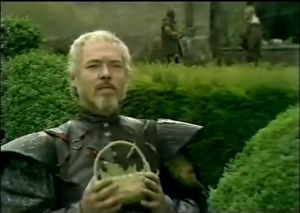
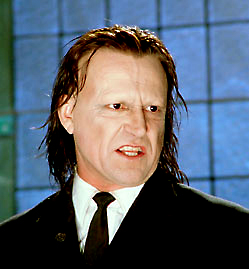
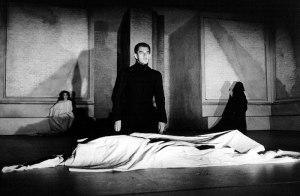 he is a bad man in the beginning, his change effect the audiecnes.
he is a bad man in the beginning, his change effect the audiecnes.
and he is the witness of Dchess’s tragedy
Gemma Arterton as the Duchess of Malfi at the Sam Wanamaker Playhouse. ‘It is one of the great female roles in the canon,’ writes Michael Billington in his four-star review, ‘and Gemma Arterton brings to it beauty, determination and a sense of moral goodness’
Elisabeth Bergner (kneeling) in a 1946 George Rylands production of The Duchess of Malfi in New York
A backstage portrait of Helen Mirren in Adrian Noble’s production of The Duchess of Malfi, at the Royal Exchange theatre, Manchester, in 1980. In his review, Michael Billington praised Mirren for portraying ‘a woman of strong sexual instincts who yet has a reassuring nobility of character’
Bob Hoskins played Daniel de Bosola, opposite Mirren, in the Royal Exchange production
Sebastian Harcombe as Bosola and Imogen Stubbs as the duchess at the West Yorkshire Playhouse, in 2006. The hardest part of playing the duchess, Stubbs told the Guardian, is ‘the madness, and to speak the beautiful lines at the same time’
Charlotte Emmerson (seen here in 2010 with Nick Blood and Claire Dargo) had ‘exactly the right mix of defiance and death-wish, passion and pathos’ as the duchess at Royal and Derngate, Northampton, according to Michael Billington
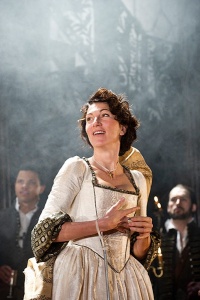 Eve Best played the duchess at the Old Vic, London, in 2012. Delivering Webster’s lines is like ‘learning to eat with a chainsaw‘ she said
Eve Best played the duchess at the Old Vic, London, in 2012. Delivering Webster’s lines is like ‘learning to eat with a chainsaw‘ she said
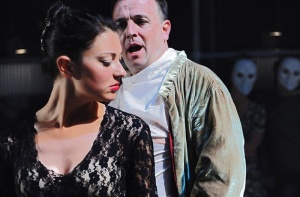 Claudia Huckle and Andrew Watts in The Duchess of Malfi by ENO and Punchdrunk, staged in a former pharmaceuticals factory, in London’s Docklands, in 2010
Claudia Huckle and Andrew Watts in The Duchess of Malfi by ENO and Punchdrunk, staged in a former pharmaceuticals factory, in London’s Docklands, in 2010
re-read the play again,
and i have some ideas about backlight on Duchees’ death themes.
how to make a contact when duchess is suffering.
Backlighting
creatting a horrible and loneliness theme on stage
some picture of Backlight using
the shadow from backlight is beautiful for creating a woman ship on stage.
i think it is a good idea of my design
firstly i was thinking to make the stage has time.
day-dusk-night.
following the story of The Duchess of Maifi.
day means mornning and brightness.
hope and beauty
Dusk is a change, when her brother find her secret.
nervous and solitary
the night means dark
horrible nightmare and tragedy, fear!
Contrast on the stage.
picture only provides the feeling of my thouhts.
morning
Dusk
NIGHT
an other interested topic in this play,
antino used Astrology in the play.
it might be some sign and symbol for me can use in to setdesgin.
so here is some Astrology researching.
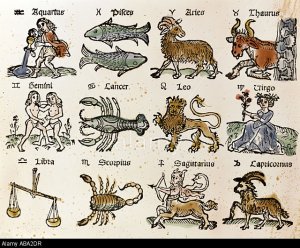
ABA2DR “astrology, zodiac signs, coloured woodcut, calender”, Germany, 1st half 16th century, private collection, Aries, Taurus, Gemin
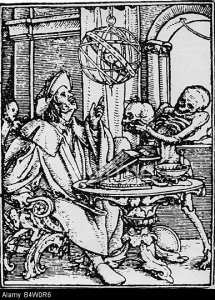
B4W0R6 astrology, astologer, stargazer, woodcut, “Dance of Death” by Hans Holbein the Younger, 1538, renaissance, Germany, 16th centur
Astrology consists of several pseudoscientific systems of divination. based on the premise that there is a relationship between astronomical phenomena and events in the human world. Many cultures have attached importance to astronomical events, and the Indians, Chinese, and Mayans developed elaborate systems for predicting terrestrial events from celestial observations. In the West, astrology most often consists of a system of horoscopes purporting to explain aspects of a person’spersonality and predict future events in their life based on the positions of the sun, moon, and other celestial objects at the time of their birth. The majority of professional astrologers rely on such systems.
Throughout most of its history, astrology was considered a scholarly tradition. It was accepted in political and academic contexts, and was connected with other studies, such as astronomy, alchemy, meteorology, and medicine.[3] At the end of the 17th century, new scientific concepts in astronomy and physics (such asheliocentrism and Newtonian mechanics) called astrology into question. Astrology thus lost its academic and theoretical standing, and common belief in astrology has largely declined. Astrology has been rejected by the scientific community as apseudoscience, having no validity or explanatory power for describing the universe. Among other issues, there is no proposed mechanism of action by which the positions and motions of stars and planets could affect people and events on Earth that does not contradict well understood basic aspects of biology and physics. Scientific testing of astrology has found no evidence to support any of the premises or purported effects outlined in astrological traditions. In one study, participating astrologers attempting to match natal charts with profiles generated by a psychological inventory produced results not significantly at variance with random chance.
Astrology has been dated to at least the 2nd millennium BCE, with roots incalendrical systems used to predict seasonal shifts and to interpret celestial cycles as signs of divine communications. A form of astrology was practised in the first dynasty of Mesopotamia (1950–1651 BCE). Chinese astrology was elaborated in the Zhou dynasty (1046–256 BCE). Hellenistic astrology after 332 BCE mixedBabylonian astrology with Egyptian Decanic astrology in Alexandria, creatinghoroscopic astrology. Alexander the Great‘s conquest of Asia allowed astrology to spread to Ancient Greece and Rome. In Rome, astrology was associated with Chaldeanwisdom. After the conquest of Alexandria in the 7th century, astrology was taken up by Islamic scholars, and Hellenistic texts were translated into Arabic and Persian. In the 12th century, Arabic texts were imported to Europe and translated into Latin, helping to initiate the European Renaissance, when major astronomers including Tycho Brahe, Johannes Kepler and Galileo practised as court astrologers. Astrological references appear in literature in the works of poets such as Dante Alighieri andGeoffrey Chaucer, and of playwrights such as Christopher Marlowe and William Shakespeare.
Astrology signs.
symboling human’s body